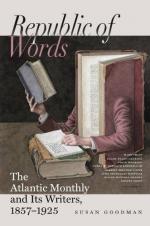The demand is such that a buyer is constantly urged to close a bargain by the assurance that it may be his last chance to secure such a weapon as the one he is examining,—and great numbers of mere toys have thus been forced upon purchasers, who, if they ever practise enough to acquire a taste for shooting, will send them to the auction-room, and make another effort to procure a gun suited to their wants. Several new patterns of guns have been produced within the last year, some of which are very attractive in their appearance, and to an inexperienced person seem to possess sufficient power for any service they may ever be called upon to perform. They are well finished, compact, light, and pretty. A Government Inspector, indeed, would be apt to make discoveries of “malleable iron,” which would cause their instant rejection, but which in reality constitutes no ground of objection to guns whose parts are not required to be interchangeable. They might be described as “well adapted for ladies’ use, or for boys learning to shoot;” but it gave me a sickening sense of the inexperience of many a noble-hearted youth who may have entered the service from the purest motives of patriotism, when a dealer, who was exhibiting one of these parlor-weapons, with a calibre no larger than a good-sized pea, informed me that he had sold a great many to young officers, being so light that they could be carried slung upon the back almost as easily as a pistol. It is with no such kid-glove tools as these that so many of our officers have been picked off by Southern sharp-shooters. At a long range they are useless; at close quarters, which is the only situation in which an officer actually needs fire-arms, a revolver is far preferable. I know of no rifle so well adapted to an officer’s use as Colt’s carbine,—of eighteen or twenty-one inch barrel, and not less than 44/100 of an inch calibre. It may be depended upon for six hundred yards, the short barrel renders its manipulation easy in a close fight, and the value of the repeating principle at such a time can be estimated only by that of life.
In a perfectly calm atmosphere, the light guns I have alluded to will shoot very well for one or two hundred yards; but no one can conceive, till he proves it by actual trial, what an amazing difference in precision is the result of even a very slight increase of weight of ball, when the air is in motion. Even in a dead calm no satisfactory shooting can be done beyond two hundred yards with a lighter ball than half an ounce, and any one who becomes interested in rifle-practice will soon grow impatient of being confined to short ranges and calm weather. This brings us, then, to the question of calibre, which I conceive to be the first one to be decided in selecting a gun, and the decision rests upon the uses to which the gun is to be applied. If it is wanted merely for military service, nothing better than the Enfield can be procured; but if the purchaser proposes to study




